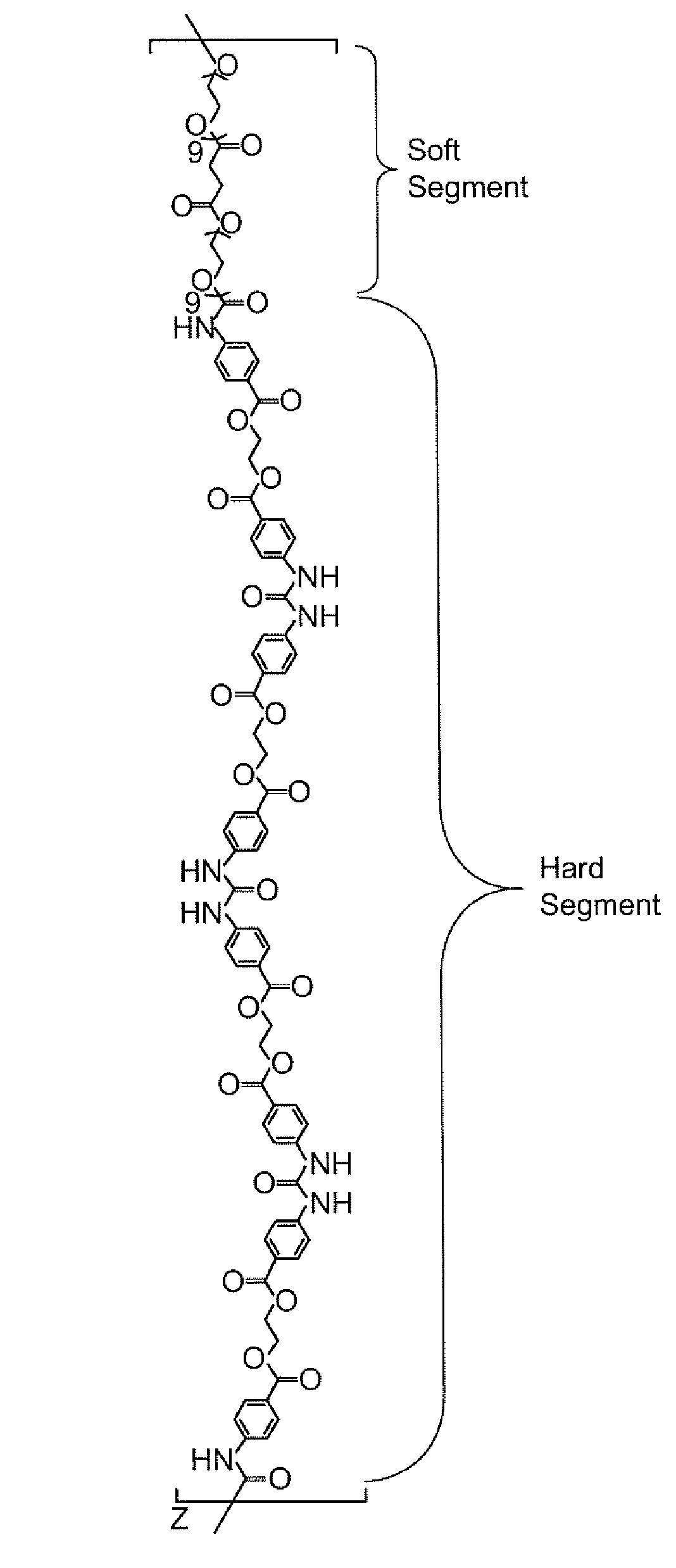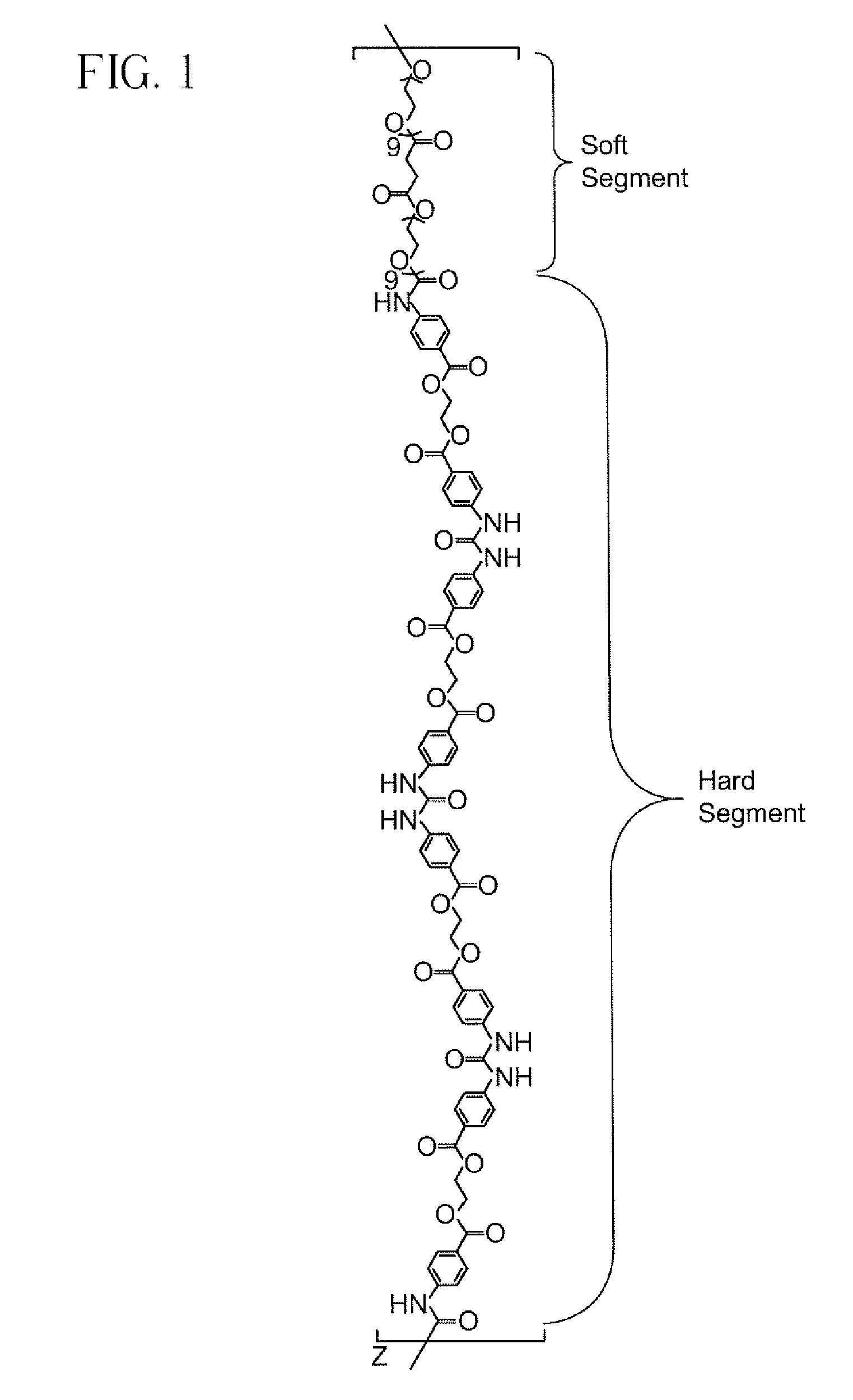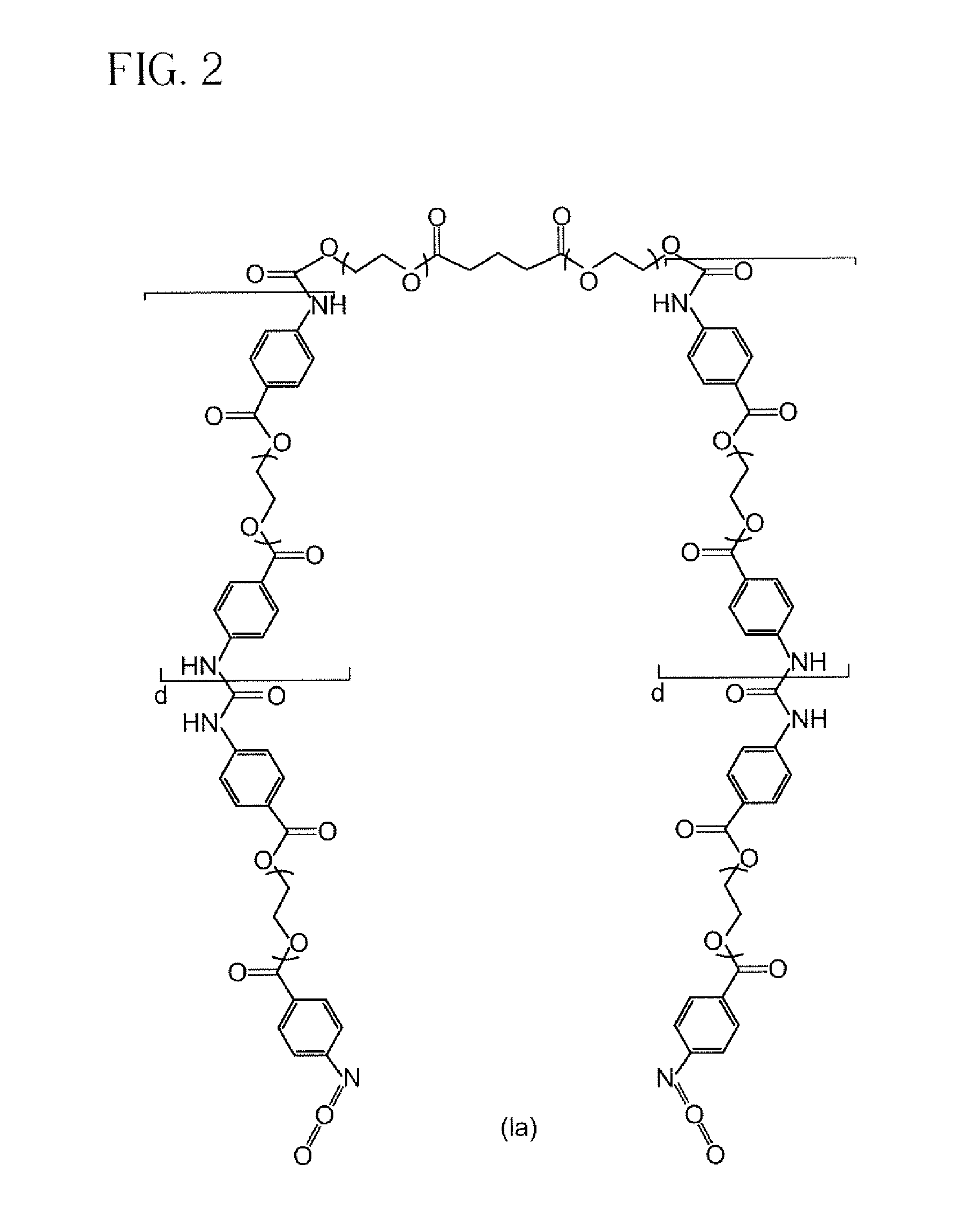Medically acceptable formulation of a diisocyanate terminated macromer for use as an internal adhesive or sealant
a diisocyanate and macromer technology, applied in the field of new polyisocyanate macromer, can solve the problems of unsuitable human use of diisocyanate monomers as internal adhesives or sealants, unsuitable small molecule diisocyanate monomers, and undesirable accumulation of water insoluble fragments in the body
- Summary
- Abstract
- Description
- Claims
- Application Information
AI Technical Summary
Benefits of technology
Problems solved by technology
Method used
Image
Examples
example 1
Part A
Preparation of Isocyanate Macromer Id (FIG. 1)
[0089]To a clean, dry 250 mL 3 neck flask fitted with nitrogen inlet, temperature probe and dean-stark trap was charged 8.72 g (0.0947 moles) of Glycerin USP. The contents were heated to 120° C. with stirring under nitrogen. Upon reaching temperature, vacuum was applied for 2 hours. Vacuum was released and 32.46 g (0.2845 moles) of Glutaric Anhydride was added. The solution was stirred under nitrogen at 120° C. for 2 hours until IR showed no anhydride present. The solution was cooled and 167.09 g (0.2784 moles) of PEG 600 NF and 0.20 g (0.0009 moles) of Tin (II) Oxalate were added. The flask was heated to 180° C. and held for 2 hours under nitrogen sparge. Vacuum was applied for an additional 17 hours after which the conversion of acid to ester groups was 99.98% based on the acid content. The polyol was cooled to 80° C. and the following were added; 6.13 g of silica-citric acid and 2.38 g of diatomaceous earth. The slurry was stirr...
example 2
[0092]15 wt % of SURGICEL* Fibrillar absorbable hemostat was mixed with the macromer mixture described in Part C by stirring the absorbable desiccant in the unreacted macromer mixture. This formulation was applied on a hydrated collagen substrate with and without free water present (addition 10 μl saline). The average burst pressures were 185 mmHg and 226 mmHg, respectively. By comparison, the macromer mixture described in Part C alone was applied on a hydrated collagen substrate with and without free water present (addition 10 μl saline), and the average burst pressures were 37 mmHg and 279 mmHg, respectively. It is believed the absorbable desiccant serves to improve the adhesion of the polymer to a substrate when excess free water at a surgical site limits the effectiveness of the adhesive.
PUM
| Property | Measurement | Unit |
|---|---|---|
| Bioabsorbable | aaaaa | aaaaa |
Abstract
Description
Claims
Application Information
 Login to View More
Login to View More - R&D
- Intellectual Property
- Life Sciences
- Materials
- Tech Scout
- Unparalleled Data Quality
- Higher Quality Content
- 60% Fewer Hallucinations
Browse by: Latest US Patents, China's latest patents, Technical Efficacy Thesaurus, Application Domain, Technology Topic, Popular Technical Reports.
© 2025 PatSnap. All rights reserved.Legal|Privacy policy|Modern Slavery Act Transparency Statement|Sitemap|About US| Contact US: help@patsnap.com



